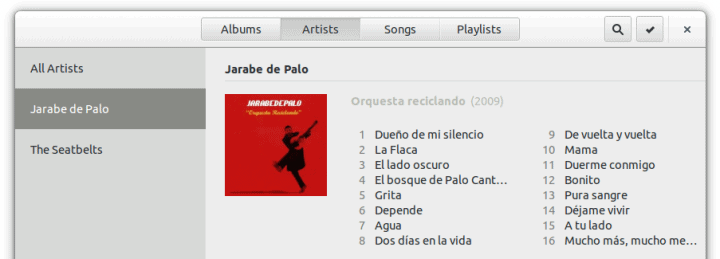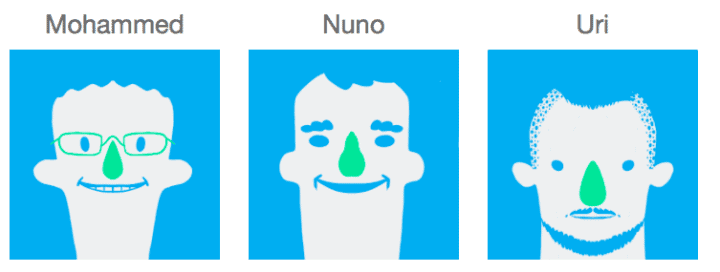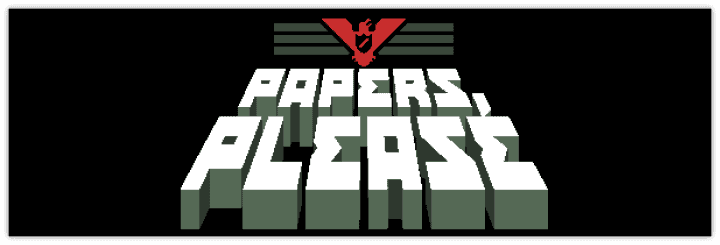More or less features?
April 30th, 2014 by Luis Augusto Fretes Cuevas
Many projects and software developers want their applications to be aesthetically pleasing and simple to use. Both imply uncluttered interfaces. Others want their application to be as useful as possible. These two are good goals that most software developers should include in their check-lists. The problem starts when developers and designers confront with the how to accomplish it. Bad reasoning type 1: Less is more We want our program to be simple to use and one less feature means less clutter. If there’s some function that 90% of users don’t actually use then is better to remove it. The problem with… Continue Reading
Review: GNOME 3.12
April 29th, 2014 by Luis Augusto Fretes Cuevas
For a brief period of time GNOME was the princess of desktop environments. The most popular distribution out there, Ubuntu, used it. Distributions perceived as being very professional such as those from Novell or Red Hat, used it. Even the “alternative” distributions like Linux Mint used it. Later with KDE making the transition from 3 to 4, GNOME 2 solidified its position as the darling of desktop environments. And then something happened. Canonical decided to create its own desktop environment, Unity. Linux Mint switched to Mate, a GNOME 2 fork, then they forked the most recent version of GNOME to… Continue Reading
Unity a year later
April 24th, 2014 by Luis Augusto Fretes Cuevas
A year ago I wrote an article about the different directions taken by Unity and KDE respectively. Beyond describing them, I took a very firm stand: Canonical made changes for the sake of change and it was an inferior experience (KDE got its fair share of criticism too). A year later with a shiny new LTS release, I thought it was time to give Unity another chance. Obviously Ubuntu is more than Unity but is the main differentiator between it and other Ubuntu-based distributions. I will split the review in three cliché sections: The good, The Bad and The ugly…. Continue Reading
Free software and governments
April 21st, 2014 by Luis Augusto Fretes Cuevas
Is proprietary software ethical? This is a hard question to tackle, one that I may attempt to answer in the future, for the time being I will content myself with trying to answer the much weaker question of what kind of software the government should use, i.e. Is the use of proprietary software by the government unethical?. However, it’s worth noting that the nature of the question is similar but differs in an important way: The general problem places the burden of moral responsibility on the developer, the second puts the burden on a specific kind of buyer. How do… Continue Reading
Opinion: More than visuals
March 31st, 2014 by Luis Augusto Fretes Cuevas
Recently, a new team composed by extremely talented designers was formed. Their goal? Design the visual appearance of KDE 5. Known as The Visual Design Group (VGD), they will ultimately design what will become the default look. There’re relatively newcomers on the group as well as old faces, Nuno Pinheiro the lead designer behind KDE 4’s Oxygen iconography, Plasma and desktop theme among them. Just as exciting, perhaps even more, they’re asking the community to be more involved in the design process, you can participate and share your own thoughts, drafts and mockups at the KDE forums. So far so good…. Continue Reading
How light is Netrunner?
March 29th, 2014 by Luis Augusto Fretes Cuevas
Minimum and usable requirements are not synonyms. Recommended specifications should not be confused with usability requirements, recommended specs are are more demanding (they represent the ideal set of components). A usability requirement is the condition in which the system not only installs and more or less works, but can also be used reasonably by other human beings. According to the official documentation, the minimum requirements to run Netrunner 13.12 are: CPU 1.6-GHz Intel Atom N270 RAM 1GB Hard Drive Size 10GB Graphics Card Intel GMA 945 Video Memory 128MB I decided to put this to test. The machine I used is… Continue Reading
Linux gaming: Papers, please
March 20th, 2014 by Luis Augusto Fretes Cuevas
Thanks to the release of Steam for Linux and the announcement of Steam OS, the number of games available for Linux have been going up systematically. Valve is also preaching by example and porting many of their games to Linux, perhaps the most exciting of all is Portal 2. One of the best games ever made. Netrunner comes with Steam ready to install so, if you’re curious, the growing world of Linux gaming is only a couple of clicks away. One of the characteristics of the modern gaming industry is big studios mostly redo the same games over and over… Continue Reading
Review: Geary
February 28th, 2014 by Luis Augusto Fretes Cuevas
The most famous e-mail client for Linux is probably Thunderbird, a powerful customizable client with support for numerous extensions. Geary is the new kid on the block, written entirely using Vala, instead of a power user heaven it attempts to be as simple as possible. Following GNOME’s philosophy. Why would anyone choose Geary over Thunderbird? Some may think the only good reason would be if you happen to appreciate really lightweight and minimalistic applications. There’s more to it than that. Easy to setup Setting up a Geary is as simple as it can possibly get. If you entered your name… Continue Reading








